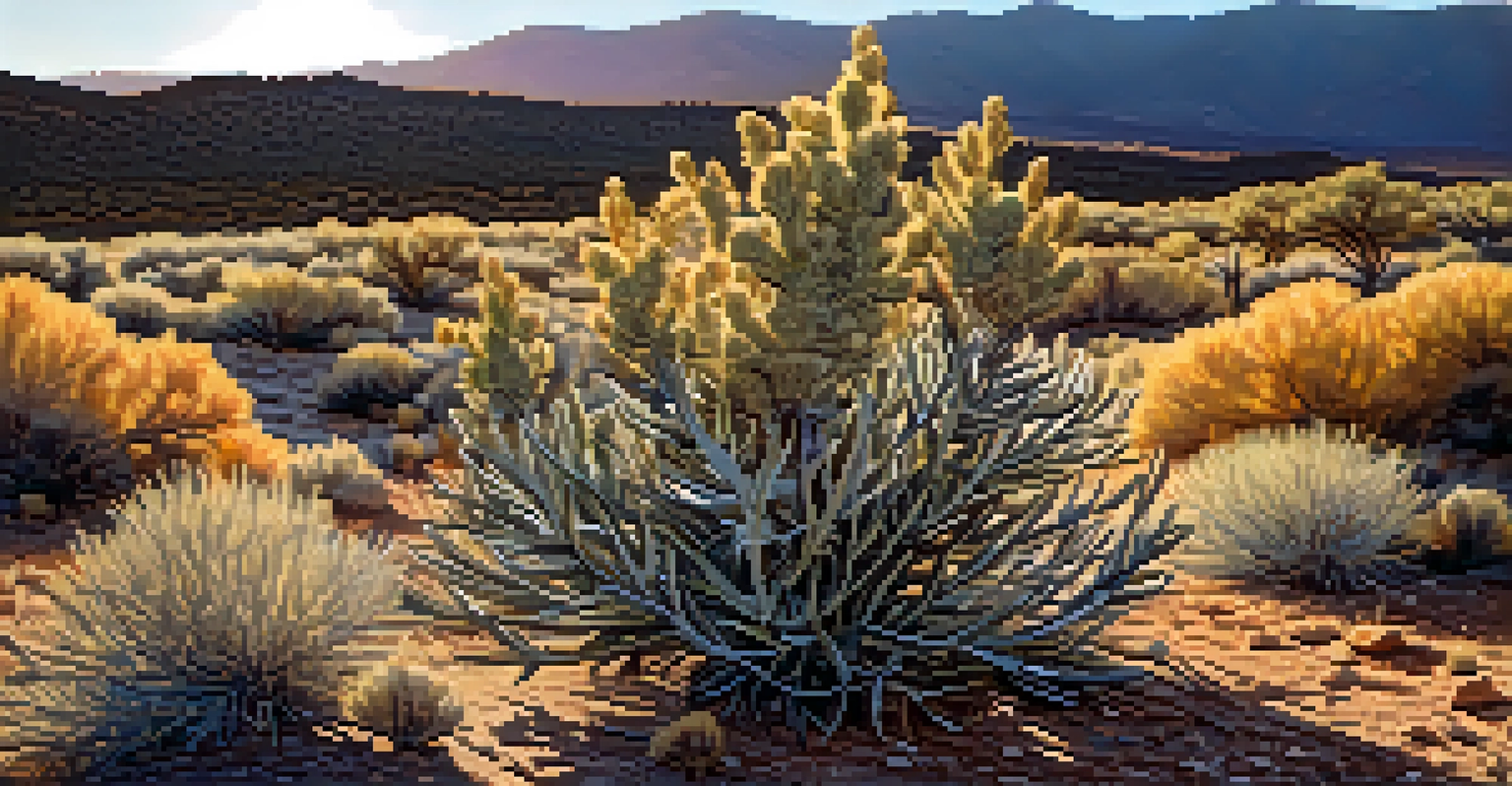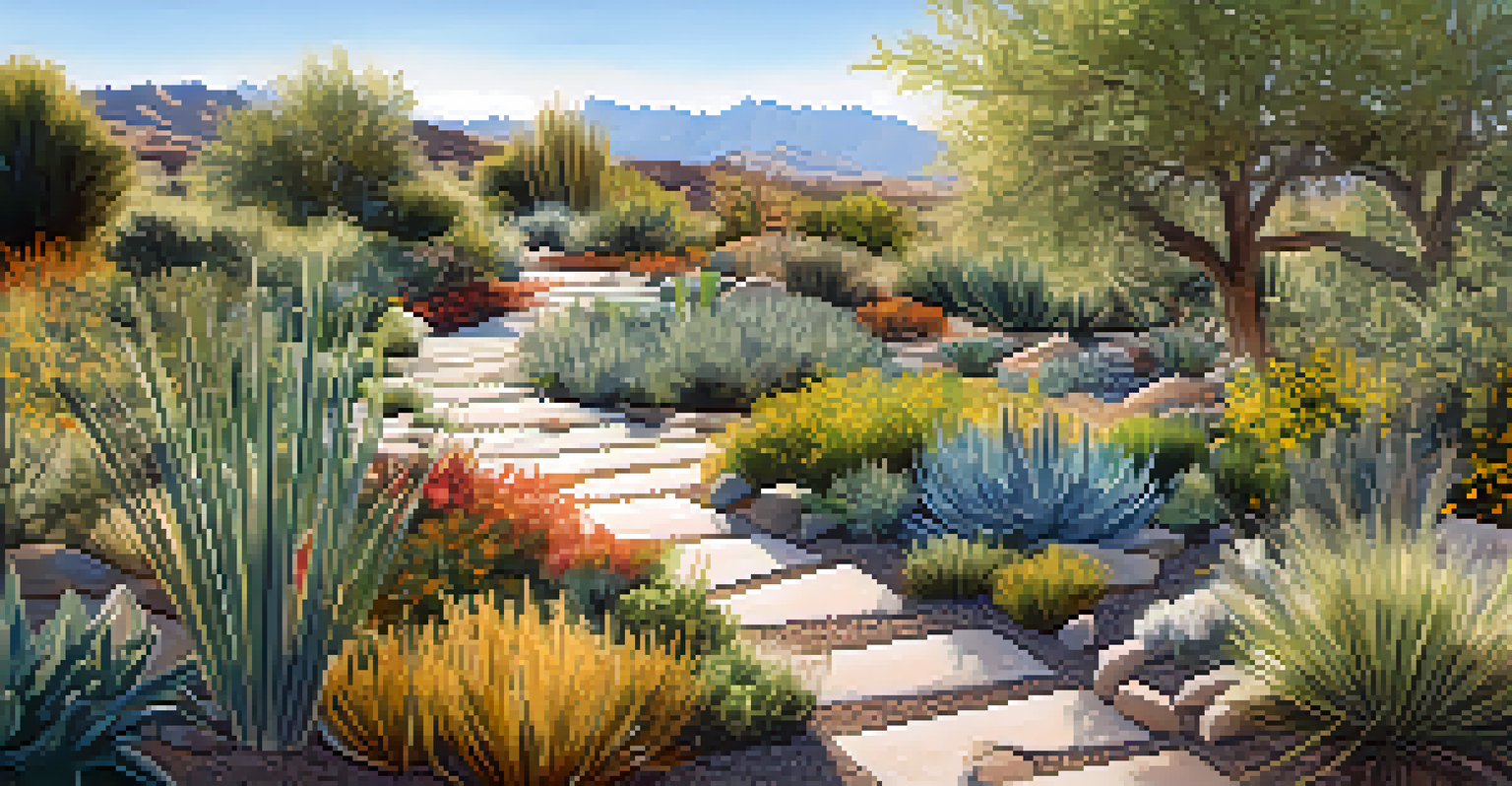Utah's Native Plants: Supporting Wildlife and Ecosystems

Understanding Utah's Unique Ecosystems
Utah boasts diverse ecosystems, ranging from deserts to mountain ranges. Each ecosystem hosts specific native plants that are well-adapted to its environment. These plants play a crucial role in maintaining the balance of their respective ecosystems, providing food and habitat for various wildlife species.
The clearest way into the Universe is through a forest wilderness.
For instance, the Great Basin Desert is home to resilient plants like sagebrush, which not only survive harsh conditions but also support numerous animals. Birds, insects, and mammals rely on these native plants for shelter, nesting materials, and sustenance, forming a complex web of life.
Understanding these ecosystems helps us appreciate the importance of protecting native plants. By preserving their habitats, we ensure that the wildlife that depends on them can thrive, leading to healthier ecosystems overall.
The Role of Native Plants in Supporting Wildlife
Native plants serve as the backbone of wildlife support in Utah. They provide essential resources such as food, shelter, and nesting sites for many species. Without these plants, local wildlife populations can struggle to survive, leading to decreased biodiversity.

For example, the vibrant wildflower blooms in the spring attract pollinators like bees and butterflies. These insects are not only beautiful to observe but are also vital for the pollination of many plants, creating a cycle of life that benefits both flora and fauna.
Native Plants Support Wildlife
Native plants provide essential resources like food and shelter, crucial for the survival of various wildlife species in Utah.
Moreover, native plants are often more resilient to pests and diseases, making them a sustainable choice for wildlife habitats. By fostering a healthy environment for wildlife, we also contribute to the overall health of our ecosystems.
Benefits of Native Plants for Soil Health
Native plants play a significant role in enhancing soil health, which is crucial for ecosystem stability. Their deep-root systems help prevent soil erosion, allowing for better water retention and nutrient absorption. This is especially important in Utah's varied climates, where soil can easily become dry and unproductive.
In every walk with nature one receives far more than he seeks.
Additionally, native plants contribute organic matter to the soil as they shed leaves and stems. This natural process enriches the soil, creating a hospitable environment for microorganisms that further enhance soil fertility. Healthy soil, in turn, supports a diverse range of plant life, creating a robust ecosystem.
By planting native species, we can actively improve our local soil health. This not only benefits wildlife but also enhances the beauty and sustainability of our landscapes.
The Importance of Biodiversity in Utah
Biodiversity is the variety of life in a particular habitat, and it is essential for ecosystem resilience. In Utah, native plants contribute to this biodiversity by supporting various species of animals, insects, and other plants. A rich tapestry of life creates a more balanced ecosystem that can better withstand environmental changes.
For instance, diverse plant communities can provide different layers of vegetation, offering varied habitats for wildlife. This layering supports a wider range of species, from ground-nesting birds to arboreal mammals, ensuring that all levels of the food chain are maintained.
Enhancing Soil Health with Native Species
The deep-root systems of native plants help prevent soil erosion and enrich the soil, promoting overall ecosystem stability.
Promoting biodiversity through native plant conservation can also help combat climate change. A healthy ecosystem is more capable of sequestering carbon, thus playing a role in mitigating the impacts of global warming.
Native Plants and Water Conservation
In Utah, where water is a precious resource, native plants play a critical role in water conservation. These plants are adapted to the local climate and require less water than non-native species, making them a sustainable choice for landscaping and gardening. Their efficient use of water helps to preserve this vital resource.
Furthermore, native plants often have deeper root systems that allow them to access groundwater, reducing the need for irrigation. This not only helps in maintaining local water supplies but also minimizes the impact on surrounding ecosystems.
By incorporating native plants into our gardens and landscapes, we can significantly reduce water usage. This shift not only benefits individual homeowners but also contributes to the larger goal of conserving water in our communities.
Cultural Significance of Native Plants in Utah
Native plants hold deep cultural significance for the Indigenous peoples of Utah. For many tribes, these plants are not only a source of food and medicine but also integral to their spiritual beliefs and practices. Understanding and respecting this cultural connection is essential for fostering a greater appreciation of the natural world.
Many native plants, such as juniper and sage, are used in traditional ceremonies and have medicinal properties. This knowledge, passed down through generations, emphasizes the importance of preserving these plants for both cultural and ecological reasons.
Cultural Importance of Native Flora
Native plants are integral to the cultural practices and traditions of Indigenous peoples in Utah, highlighting the need for their preservation.
By recognizing the cultural value of native plants, we can support conservation efforts that honor Indigenous traditions while promoting biodiversity and ecological health.
Steps to Promote Native Plant Conservation
Promoting native plant conservation can start at home. Homeowners can choose to incorporate native plants into their gardens, replacing non-native species that require more resources. This simple step not only beautifies personal spaces but also provides habitats for local wildlife.
Community initiatives, such as native plant sales and educational workshops, can further encourage the use of native species. By engaging with local organizations focused on conservation, individuals can learn more about the benefits of native plants and how to care for them.

Ultimately, every small action contributes to a larger impact. By working together to support native plants, we can help preserve Utah's unique ecosystems for future generations.